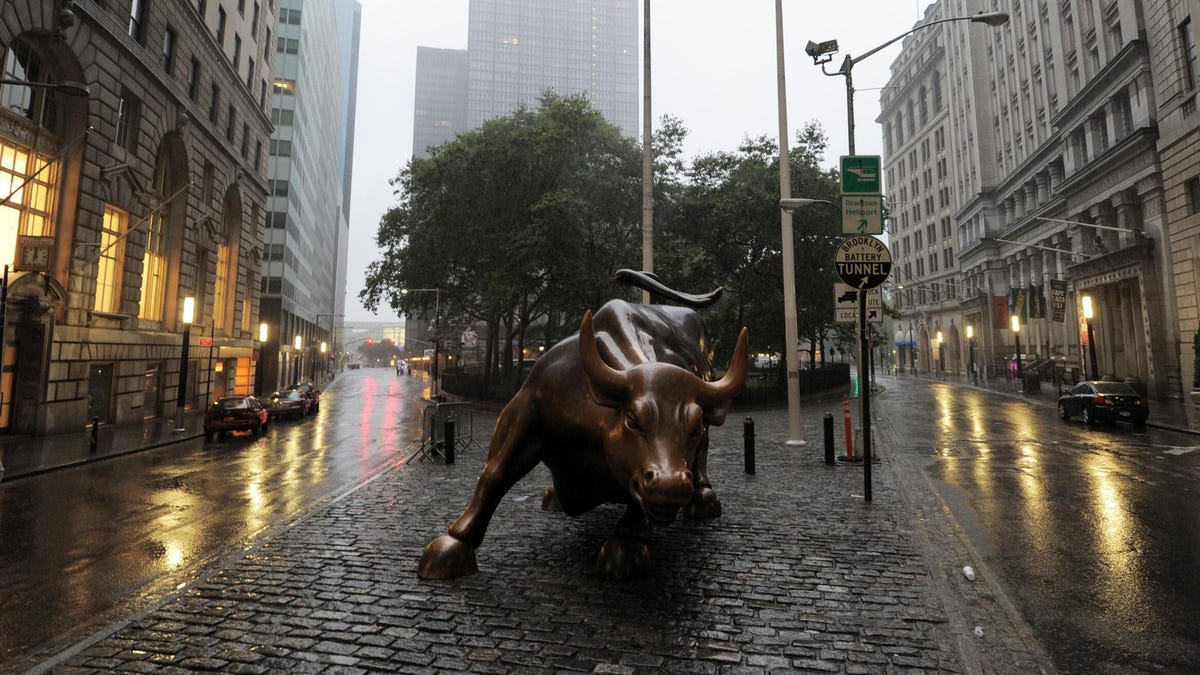Topline
March was a ferocious month for U.S. bank stocks, wiping out hundreds of billions in the grouping’s market value as several institutions failed and others faltered, though some experts say the most painful days for the bleeding sector have already come and gone.
Key Facts
This month, bank stocks navigated the failures of Silicon Valley Bank and Signature Bank and severe struggles from other regional banks; financials were by far the S&P’s worst-performing sector in March, shedding 10.6% as of 10 a.m. ET.
In fact, 11 of the S&P 500’s 12 worst monthly performers were bank stocks, with First Republic’s 89% March decline leading the charge.
The market value of the 10 largest banks sank from $1.59 trillion on March 1 to $1.34 trillion on March 31, a stark 15% decline.
The losses were even more severe when extended to 25 of the largest U.S. banks, as that grouping’s market capitalization went from $1.96 trillion to $1.63 trillion, losing some $332 billion in March.Remarkably, the Dow Jones Industrial Average (up 1.1%), S&P 500 (2.5%) and tech-heavy Nasdaq (5.5%) are still well on their way to positive months.
And March did in fact go out like a lamb even for bank stocks, as the 10 largest banks recovered $47 billion in market capitalization this week.
Key Background
Regulators shuttered Silicon Valley Bank and Signature Bank on March 10 and March 12 as the banks failed to meet customers’ liquidity needs, marking the second and third-biggest bank failures in the nation’s history. The Federal Deposit Insurance Corporation swooped in to guarantee depositors at those institutions even with holdings above the typical $250,000 limit soon thereafter, but that did little to calm equity investors at banks who did not want to see their stakes sink to zero should their institution be the next one to experience a run. Federal banking regulators blamed Silicon Valley Bank leadership’s failure to manage risk as the primary reason for collapse, but widely sinking share prices indicate the widespread concerns about how banks can navigate a macro environment in which interest rates are at a 17-year high. The Federal Reserve hiked rates March 22 for the ninth consecutive time, indicating its focus remains on bringing down inflation.
Contra
“The upheaval in the banking sector appears to be taking small but steady steps to normalization,” declared Bank of America strategists led by Mark Cabana in a Friday note to clients. The analysts pointed to a recent decline in bank borrowing from the Fed and other emergency funding sources as well as the relative strength of assets held by the institutions. “The liquidity crunch is subsiding, the next phase will be assessing the damage,” Cabana wrote. Oanda analyst Craig Erlam concurred about the market sentiment, writing Friday “investors are feeling reassured by the lack of turmoil” among banks this week.
What To Watch For
April will reveal just how painful the last few weeks were for banks’ bottom lines as most institutions disclose quarterly earnings. The 10 largest U.S. banks will report between April 14 and 20, while First Republic’s closely-watched earnings will come April 14.
Tangent
Driving March’s index gains were massive jumps from technology stocks. Chipmakers Intel and Advanced Micro Devices were the first and third-best performers on the S&P this month, respectively, while Salesforce, Meta and Microsoft’s double-digit gains also ranked in the top 10.
Surprising Fact
More than a dozen bank stocks sank to multiyear lows in March.
These Bank Stocks Hit Lows—Some Even All-Time Lows—This Month (Forbes)
Fed’s Emergency Loans to Banks Fall in Sign of Easing Turmoil (Bloomberg)
Senate Banking Hearing: Officials Blame Management At Failed Banks, Tout Regional Banks As Economic ‘Strength’ (Forbes)
Read the full article here










